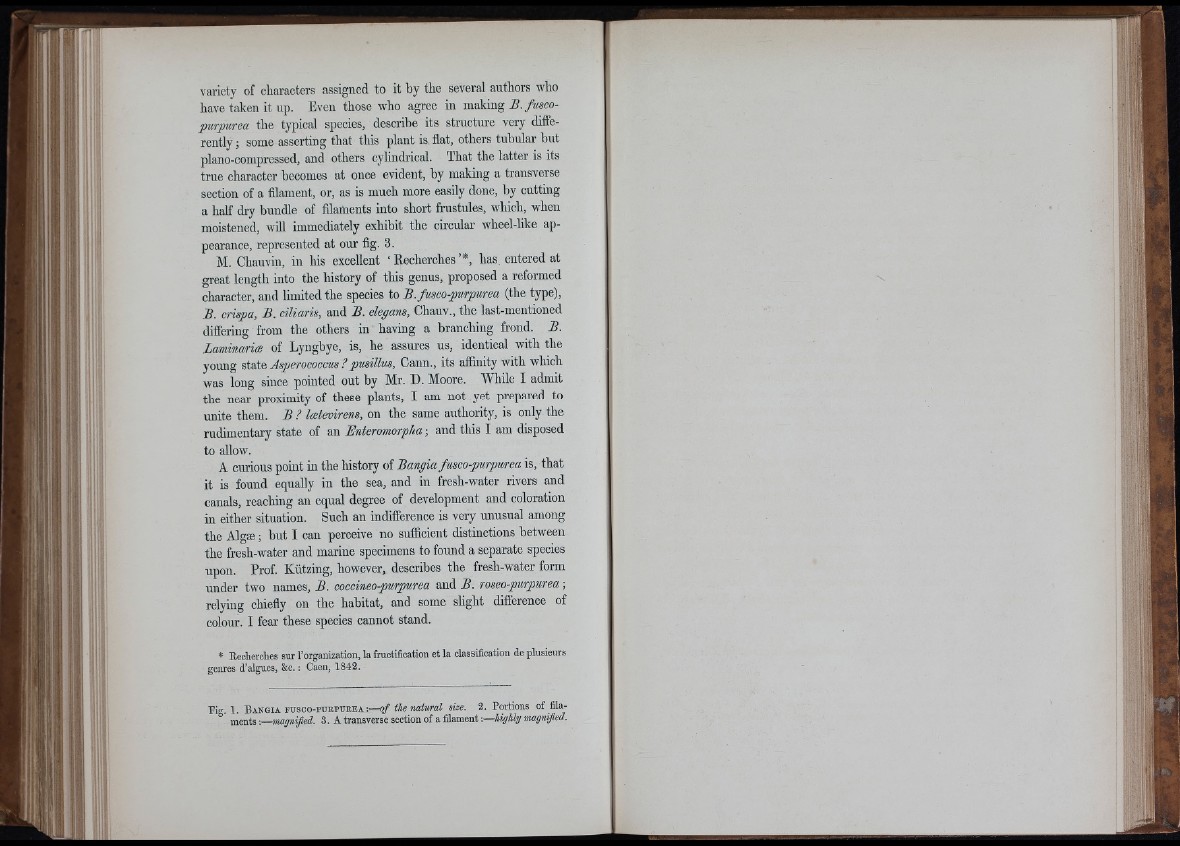
variety of characters assigned to it by the several authors who
have taken it up. Even those who agree in making î9./?îsco-
purpurea the typical species, describe its structure very differently
; some asserting that this plant is flat, others tubular but
piano-compressed, and others cylindrical. That the latter is its
true character becomes at once evident, by making a transverse
section of a filament, or, as is much more easily done, by cutting
a half dry bundle of filaments into short frustules, which, when
moistened, will immediately exhibit the circular wheel-like appearance,
represented at our fig. 3.
M. Chauvin, in his excellent ‘Recherches’*, bas entered at
great length into the history of this genus, proposed a reformed
character, and limited the species to B. fusco-purpurea (the type),
B. crispa, B. ciliaris, and B. elegans, Chauv., the last-mentioned
differing from the others in having a branching frond. B.
Laminarioe of Lyngbye, is, he assm-es us, identical with the
young Asperocoocus ? pusillus, Cann., its affinity with which
was long since pointed out by Mr. D. Moore. Mobile I admit
the near proximity of these plants, I am not yet prepared to
unite them. B ? Icetevirens, on the same authority, is only the
rudimentary state of an Bnteromorplia ; and this I am disposed
to allow.
A curious point in the history of Bangia fusco-purpurea is, that
it is found equally in the sea, and in fresh-water rivers and
canals, reaching an equal degree of development and coloration
in either situation. Such an indifference is very unusual among
the Algæ ; but I can perceive no sufficient distinctions between
tbe fresh-water and marine specimens to found a separate species
upon. Prof. Kiitzing, however, describes the fresh-water form
under two names, B. coccineo-purpurea and B. roseo-purpurea ;
relying chiefiy on the habitat, and some slight difference of
colour. I fear these species cannot stand.
* Eecherches sur 1’organization, la fructification et la classification de plusieurs
geraes d’algues, &c.: Caen, 1843.
Fig. 1 . B a n g ia Fusoo-PUBPUEEA;— of the natural size. 3 . Portions of fila-
' ments ■.— maqniiiecl. 3 . A transverse section of a filament —■— v .u
1 4Y
: •-■’.U l